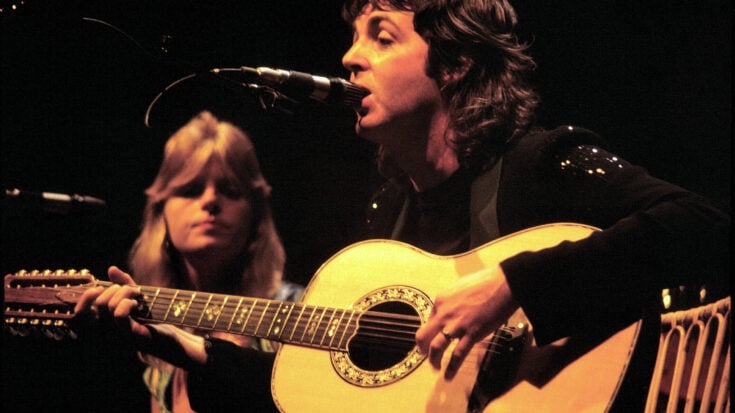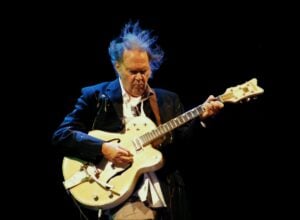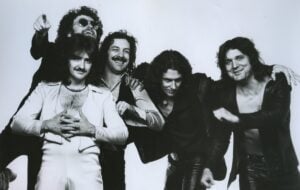Classic Rock Tracks You May Have Forgotten Were Created for Major Films

Jim Summaria, CC BY-SA 3.0, via Wikimedia Commons
Few things feel more exciting than seeing a film and hearing a song you love on the big screen. Sometimes movies bring out new hits in ways fans don’t expect. While some tracks were already hits, other songs were written specifically for a film and became iconic in their own right. These are the classic rock songs created for movies, each tied to the story or energy of the film that inspired it.
U2 – “Hold Me, Thrill Me, Kiss Me, Kill Me” (Batman: Forever, 1995)
Tim Burton’s Batman films had long pushed pop music into cinema, and U2 added their mark with this track. Originally written for 1993’s Zooropa, the song joined the Batman Forever soundtrack after Bono’s planned cameo as MacPhisto fell through. While Seal’s “Kiss From A Rose” stole some attention, U2’s song gave the band major chart success in both the UK and US.
The track helped the soundtrack reach the top 10 in America and marked U2’s strongest showing since 1991. Its mix of theatrical flair and rock energy matched the movie’s larger-than-life take on Gotham City, fitting perfectly with the comic book world.
Blondie – “Call Me” (American Gigolo, 1980)
Blondie had a string of hits before 1980, but “Call Me” became a defining track. Written as a disco-inspired song with Debbie Harry’s lyrics, it was tied to American Gigolo, a film that helped launch Richard Gere’s movie career. While the movie faded from memory, the song dominated charts on both sides of the Atlantic.
The single’s success gave Blondie a lasting anthem beyond the film’s fame. Its pulsing rhythm and catchy vocals transformed a soundtrack contribution into one of the band’s signature songs, keeping it alive in pop culture decades later.
Motorhead – “Born to Raise Hell” (Airheads, 1994)
By the early 1990s, Motorhead had moved into film-related projects, from No More Tears to Hellraiser III. When Airheads, a metalhead comedy, needed a soundtrack, the band reworked “Born to Raise Hell” from their 1993 album Bastards, adding guest vocals from Ice-T and Whitfield Crane.
The movie flopped at release but gained cult status, while the song gave Motorhead their final UK Top 50 chart entry in Lemmy’s lifetime. The track blends heavy metal intensity with cinematic flair, reflecting the movie’s chaotic, comedic tone while standing on its own as a rock anthem.
Guns N’ Roses – “Oh My God” (End of Days, 1999)
After a turbulent 1990s, Guns N’ Roses returned with Oh My God on the soundtrack to End of Days. The track reflected the band’s evolution toward a nu-metal sound, aligning with changing rock trends of the era. While not widely hailed as a classic, it marked the first single for the band’s new lineup.
The song allowed GNR to stay relevant in both film and music spaces. Its aggressive riffs and industrial undertones mirrored the dark, apocalyptic energy of the movie, bridging the band’s signature style with a cinematic edge.
Survivor – “Eye of the Tiger” (Rocky III, 1982)
Sylvester Stallone personally requested Survivor’s “Eye of the Tiger” for Rocky III. The track was crafted to match Rocky Balboa’s determination and fight sequences, instantly capturing the movie’s intensity. Its driving guitar riffs and rhythmic urgency made the song a motivational anthem beyond the film.
Released as a single, it became a number-one hit worldwide. The track’s success reinforced how a film’s energy could shape a song that stands on its own, inspiring athletes, fans, and anyone needing a boost of adrenaline.
Paul McCartney & Wings – “Live and Let Die” (Live and Let Die, 1973)
The James Bond franchise added rock flair when Paul McCartney & Wings recorded “Live and Let Die.” Written as the title song for the film, it mixed orchestral drama with hard rock energy. The track was nominated for an Academy Award and remains one of Bond’s most famous themes.
McCartney’s contribution gave the series a fresh sound while cementing the song as a classic outside the film. The energetic shifts between soft verses and explosive choruses mirrored Bond’s high-stakes world, making the music an essential part of the movie’s identity.
Jon Bon Jovi – “Blaze of Glory” (Young Guns II, 1990)
Written for Young Guns II, “Blaze of Glory” became Bon Jovi’s first solo number-one hit. Inspired by the outlaw tale, the song channels the story’s tension and drama, giving a cinematic feel to the lyrics. Its western rock sound matched the movie’s setting, making it an extension of the narrative.
The track led to an album of similarly themed songs, showing how one movie can influence an entire creative period. Bon Jovi’s work transformed a film commission into a chart-topping song that still resonates with fans today.
Huey Lewis & The News – “The Power of Love” (Back to the Future, 1985)
This hit was written specifically for Back to the Future, complementing Marty McFly’s energetic journey through time. Its upbeat tempo and catchy chorus captured the film’s youthful spirit while earning an Academy Award nomination.
The song became one of Huey Lewis & The News’ signature hits. Its integration into key scenes gave it cinematic weight, demonstrating how a movie soundtrack can elevate a song to iconic status and embed it in popular culture.
Simon & Garfunkel – “Mrs. Robinson” (The Graduate, 1967)
Commissioned for The Graduate, Paul Simon wrote new material that evolved into “Mrs. Robinson.” Though other tracks were temporary placeholders, this song became the standout hit, matching the movie’s themes of youthful confusion and rebellion.
Its melodic hooks and memorable lyrics made it far more famous than the scenes it accompanied. Simon & Garfunkel turned a soundtrack commission into a timeless classic, showing how film projects can inspire enduring work.





















